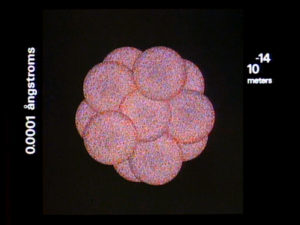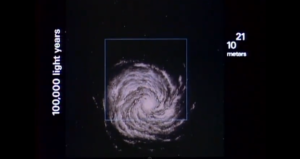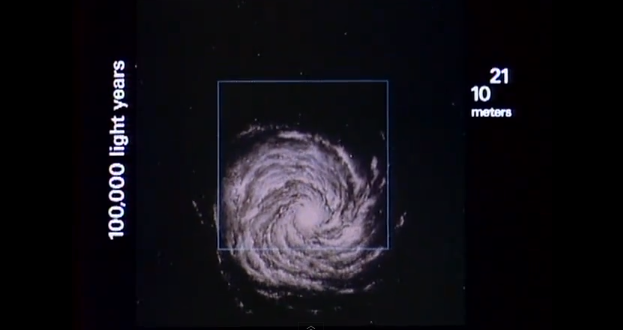One of the things that many people find difficult when they first try out an Awareness Through Movement class is the idea of doing “less”. You come to class, lie on the floor, spend a couple of minutes just feeling your body and then do the simplest movements you can imagine – that sometimes feel like doing almost nothing . . . so why does the teacher still keep telling you to make the movement even smaller, make the movement slower . . . to “do less”?!
It’s perhaps the simplest and yet most revolutionary idea that Moshe Feldenkrais introduced to the world when he created the Method that now bears his name. Now a little over three decades since Feldenkrais left the planet, countless numbers of people continue to experience the power of that idea by slowing down and paying attention to themselves in a way that they normally would never do – and those that stick with it find that almost everything they do in life gets easier.
But this simple idea is often not so simple. And many people find that slowing down can really be a challenge. I have now been practicing Awareness Through Movement for nearly five years, and I still find this idea a challenge. But a recent experience gave me a new way of looking at this idea, something that has made doing less a bit easier.
Just as things can get infinitely large to the point where we can barely fathom their magnitude, things can also become infinitely small, and similarly beyond our ability to imagine . . . unless we have a telescope or a microscope.


Stills from 1977 film, The Powers of Ten
And this is truly a case where a picture is worth a thousand words – and a film is worth infinitely more .
So, here is an amazing film, The Powers of Ten (1977), by Charles and Ray Eames.
It was recommended to me by a good friend after I told her my experience of a new way to find “less” – and the rich rewards it afforded me. I’d like to invite you to invest the nine minutes it takes to watch this stunning demonstration of magnitudes before I explain what happened to me:
So, did you watch the movie?!
OK, here’s my story.
Not too long ago I was lying on the floor doing an Awareness Through Movement lesson and it was one of the ones we sometimes refer to as a “quiet lesson” – where the movements are especially small and subtle, even compared to other Awareness Through Movement lessons. I decided that this would be an opportunity for me to learn something new on the microscopic level, so from the very beginning of the lesson, I was thinking of my movements in terms of millimeters.
But then the instruction was given again and again to make the movement smaller and slower. So when I tried to do this I quickly ran into a problem – I was already going just about as small as I possibly could go without ceasing to move! My first response was to move mostly in my imagination and then I tried to imagine smaller and smaller movements until I seemed to come to another place where nothing could be further be divided into smaller parts.
How to continue?
It was at this moment when I began to imagine my body under a microscope. Then when I would arrive at my tiniest denomination of movement, I would imagine “zooming in” so that the fraction of a millimeter would suddenly appear to be a whole meter long. From there, it was no trouble to cut this new “meter” in half, and in half again, and again . . .
Somewhere in the midst of nearly an hour of this kind of exploration, I began to actually feel for the first time the sense that the arising of a thought is already the beginning of a movement, and I began to try to stop the movement at earlier and more embryonic stages of this mental seed of action.
This was all well and good for most of the lesson – and was further reinforced when the entire class was explicitly asked to make movements so small that a bystander would not be able to observe them. But after all that, how was I to accomplish the idea of “doing less” when asked at the end of the lesson to do a movement billions of times larger than what I had been doing for the previous hour?!
“Roll to your side and come up into standing.”
What I arrived at was the sense that doing anything beyond simply hearing the instruction was already too much. So I simply lay on the floor trying to resist any sense of having any intention to move and simply observed myself. And I was amazed, after about a half a minute, to observe myself doing exactly what had been asked. I rolled to my side, came into a sitting position and then into standing. But it was as if I didn’t move at all. I almost had the sense that I was watching myself from the outside as my body transitioned through space. It was perhaps the closest I’ve come to experiencing the total absence of effort in movement.
I don’t think I will ever forget this experience, and I now bring it with me when I teach.
For example, I recently asked a group of my students to make their movements smaller by the following process: “Do the movement again, taking the same amount of time as the previous movement, but make the distance you move half as large,” I said. “Now, do a movement the same size as the last one, but make it take twice as long in duration.” And then I repeated each of these two instructions again, several times.
But then I had to acknowledge that all of this was much easier said than done. Furthermore, I noted, it might seem exasperating. So then I invited them to think of it another way.
“Do you remember when you were a little kid and you saw what was on the other side of a microscope for the very first time?” I urged them to become that child again, to gaze in wonder at the enormous universe of sensation and experience to be found in the first millimeter and microsecond of each action.
Just as in the film, Powers of Ten, when we observe the very smallest and most initial moments of our movement patterns, we often discover that every aspect of the larger structure is already present.
For example, if you turn your head to one side, you will most likely also move your chin either towards or away from your chest. You may not notice it at first, but once you place your attention on this part of the pattern it becomes clearer and clearer. And the clearer it gets, the smaller and smaller a movement you can make, and still observe it.
And perhaps if you turn your head one millimeter to the other side you will notice that your chin moves in the other direction. At this stage the difference between the two sides is still tiny, but it is already indicative of a pattern that will be dramatically different when enacted on a larger scale. The importance to the end result of such subtleties is what Feldenkrais practitioners sometimes call “the difference that makes a difference.”
Well, this might be interesting, but what does it matter?
It matters in every way!
Because most of us are constantly enacting patterns that don’t serve us – not only patterns of movement, but also patterns of thinking, patterns of communicating, patterns of not being fully present in each moment.
But when we can observe the patterns of our life in midstream at an earlier and earlier moment of each act, then we have more and more time to catch ourselves and change direction if we need to do so. Each thing we do becomes more considered, more precise, and more expressive of our true self – because we are less and less at the mercy of the autopilot of our ingrained habits.
One of the clearest expressions of this change that I can observe in myself is when my wild-spirited 7-year-old daughter again and again challenges my notion of “what we are supposed to be doing right now” by continually returning to her natural drive to explore and play.
So, when I ask her to put on her shoes to go to school and a minute later I find her barefoot playing with her dolls, I have time to observe myself as I tense and draw a breath, preparing to raise my voice and unleash fury. I also have time to admire her seemingly limitless imagination and remember what a space cadet kid I used to be. And then I’m often surprised to simply observe myself as I calmly say, “Maria”, and wait for her to look up and make eye contact with me. “It’s time for school. Please, put on your shoes!”
Before I began my Feldenkrais training, I had a number of parenting moments that did not turn out anything like this. And yes, Dad is still capable of losing his temper these days, but it happens less and less. So when I think of the math involved in the millions of interactions yet to come between my daughter and I as she grows towards her full adult potential of confidence, creativity and self-awareness, I can’t think of a better reason to continue exploring the realms of microscopic infinity to find the difference that makes a difference.
That is why I practice the Feldenkrais Method!

Thank you, Seth!
I loved your blog and because I loved it I will read it again during the next days. And will surely comment more, for now just a big like.
Pingback: Improvising with Movement as Metaphor: The Creative Practice of the Feldenkrais Method | Move Like A Child!